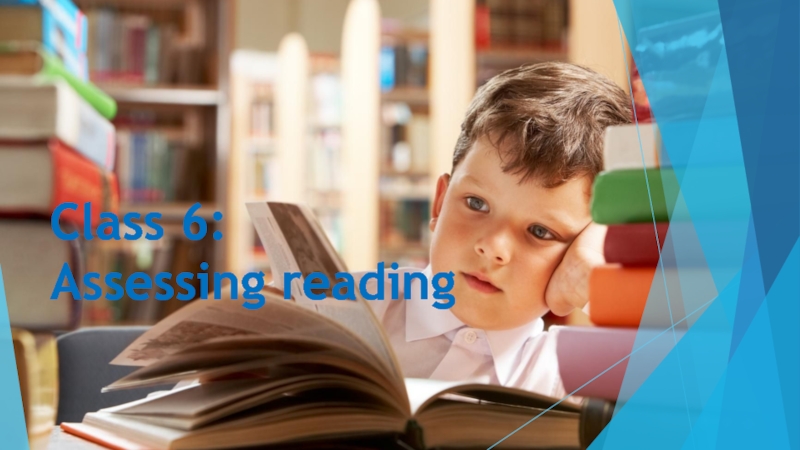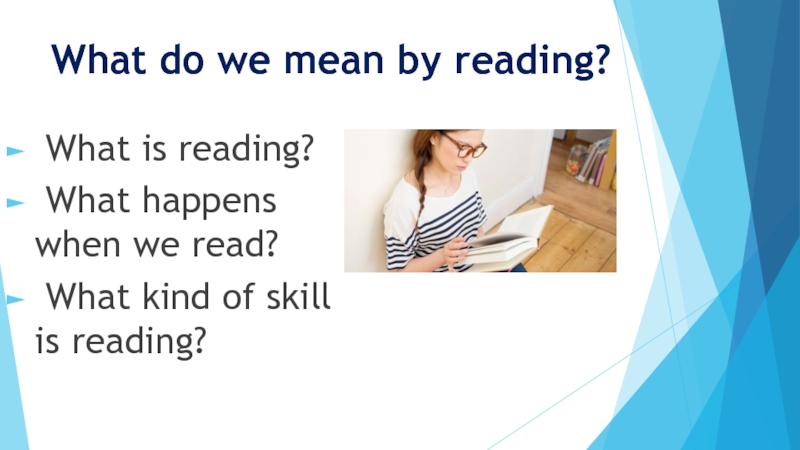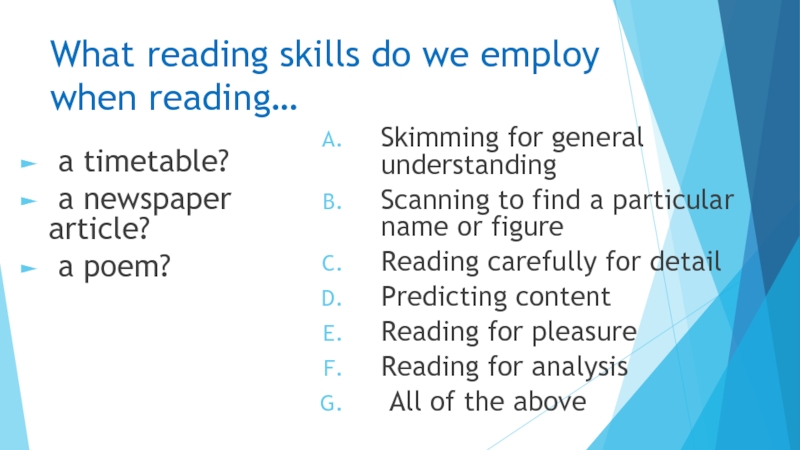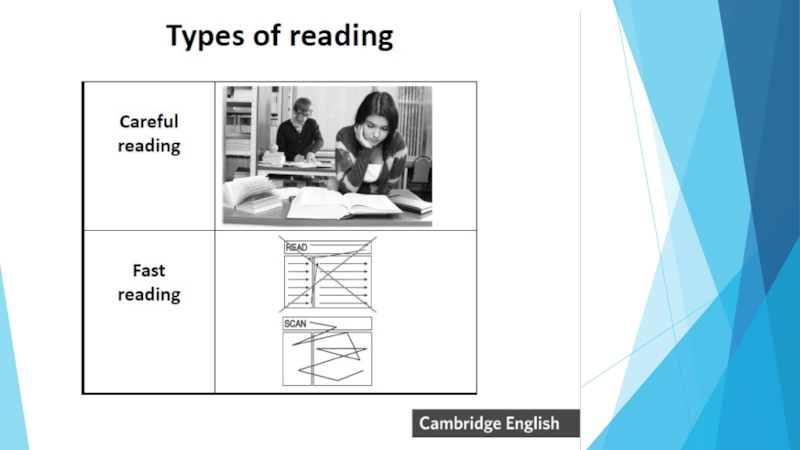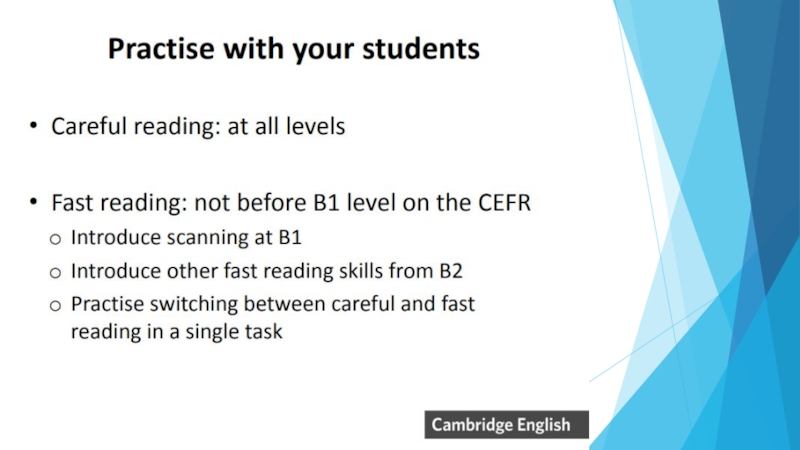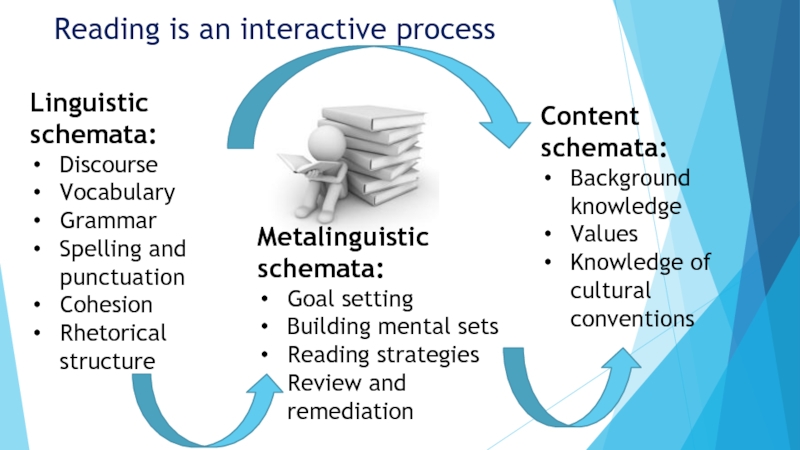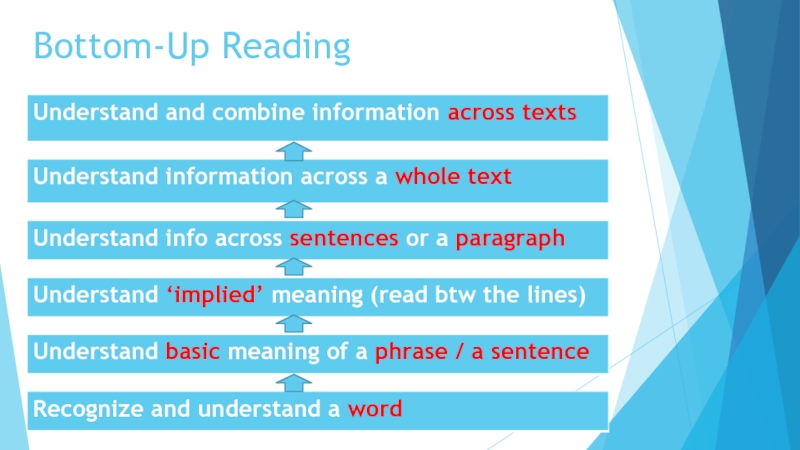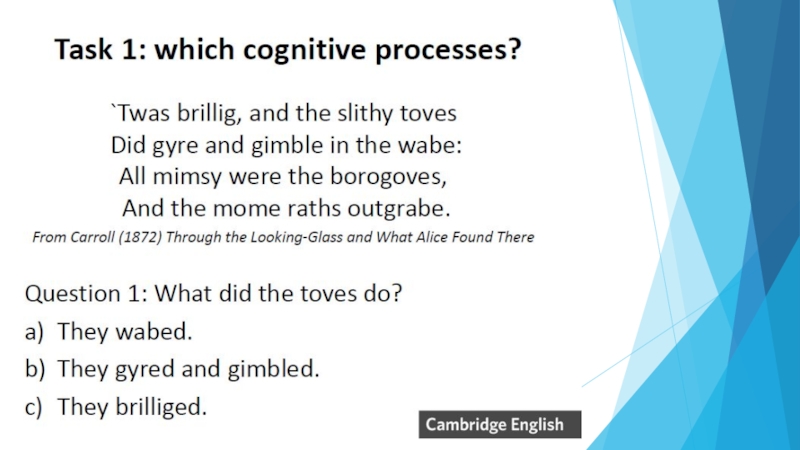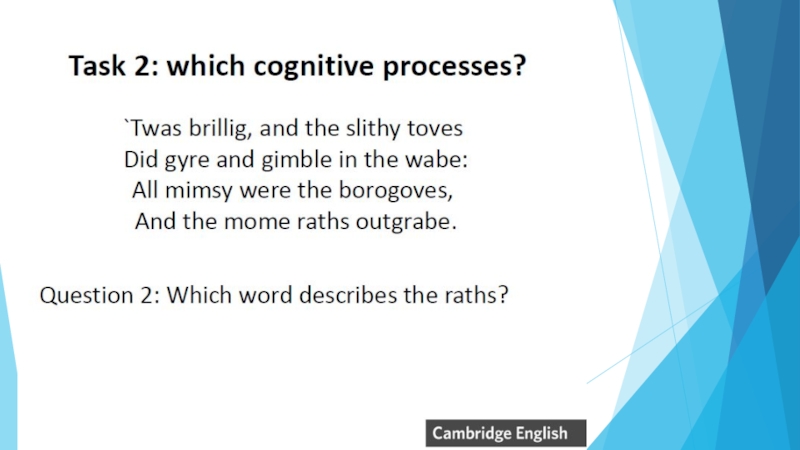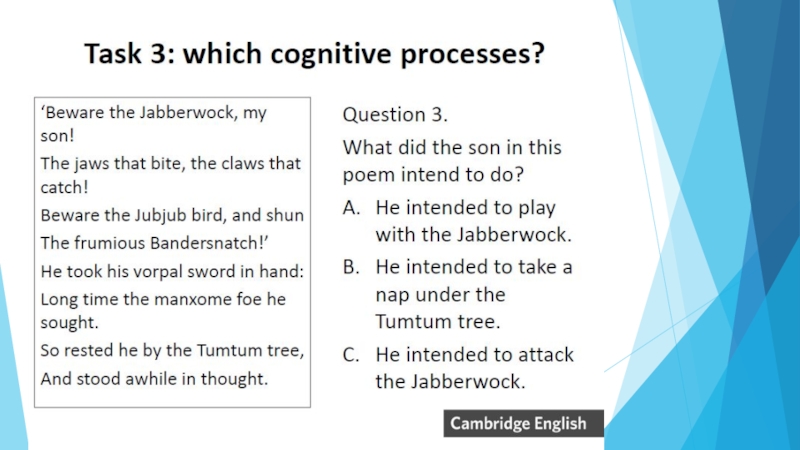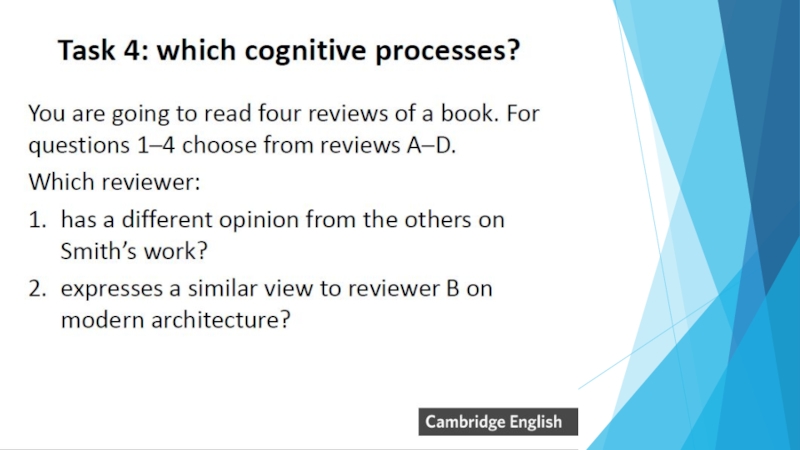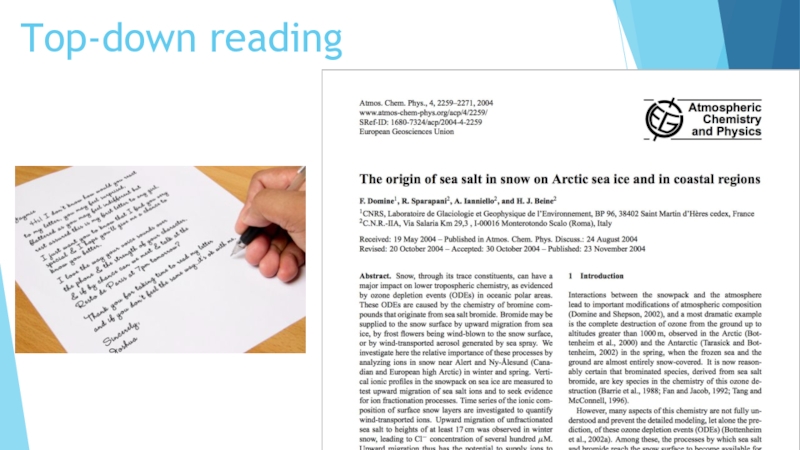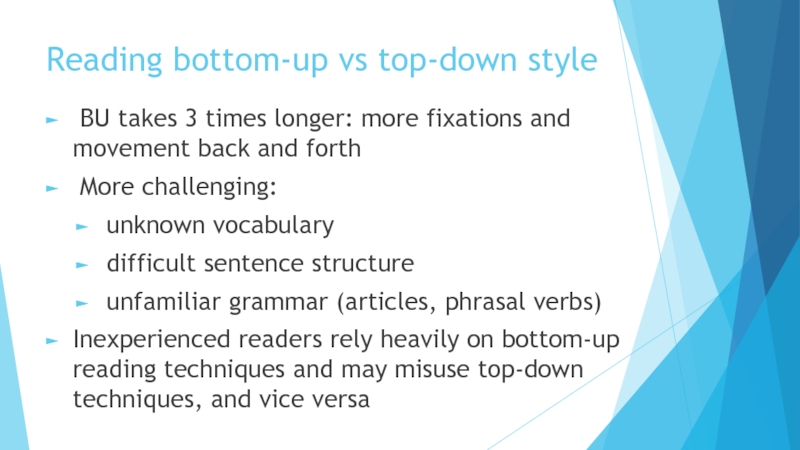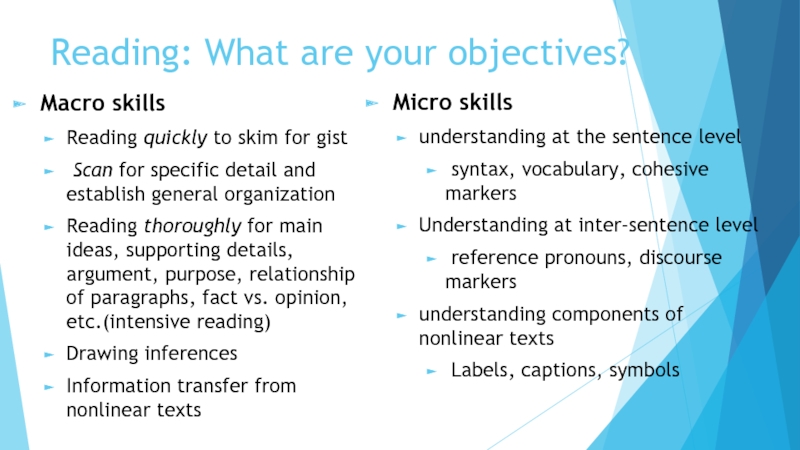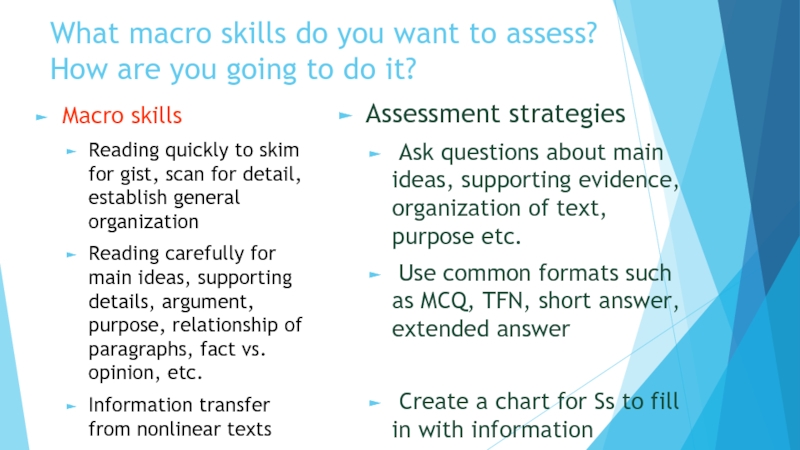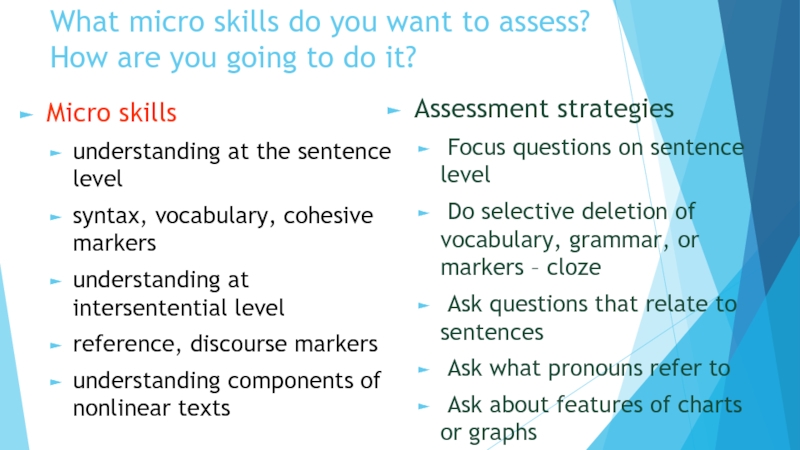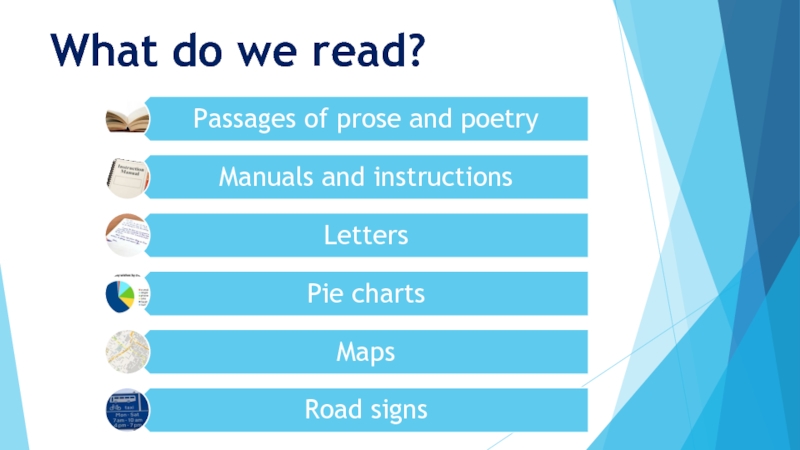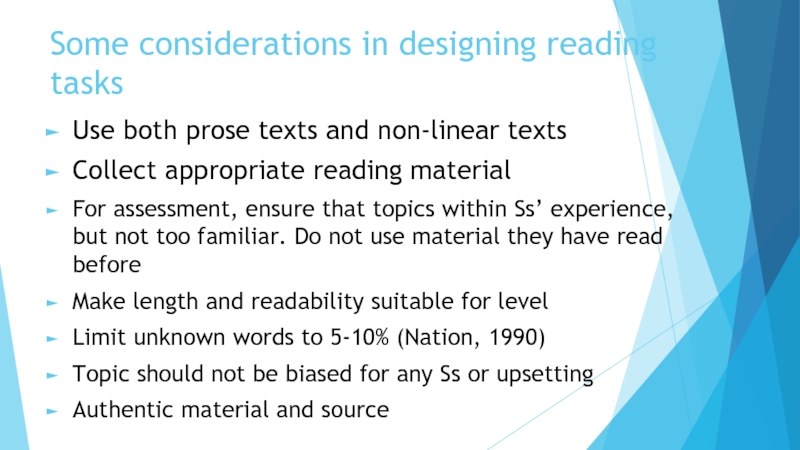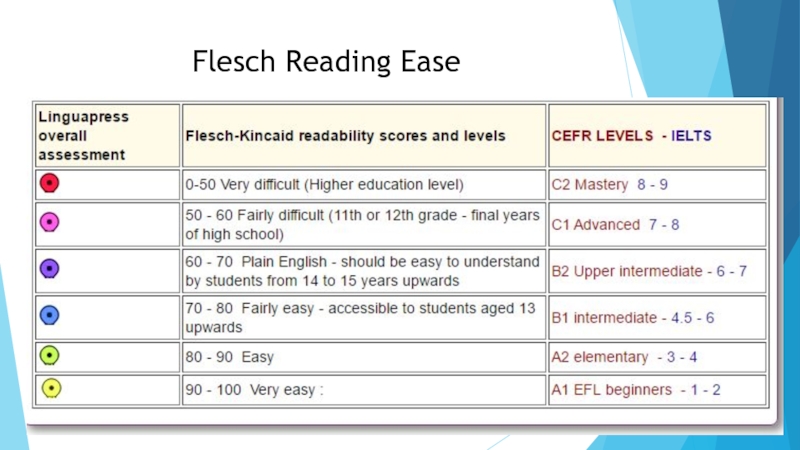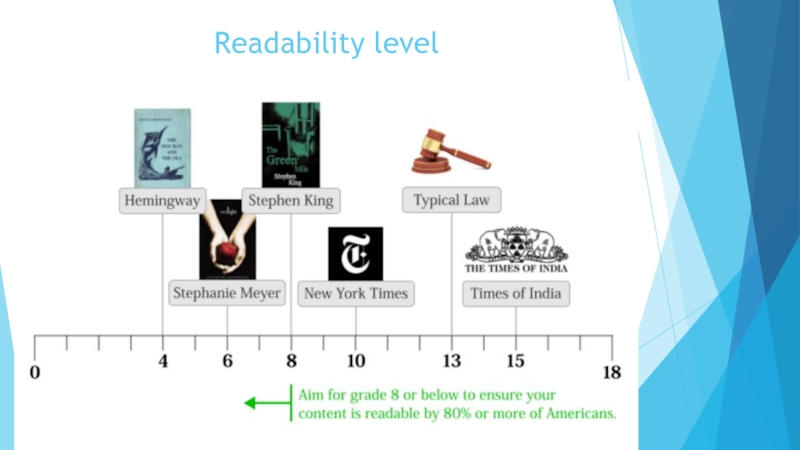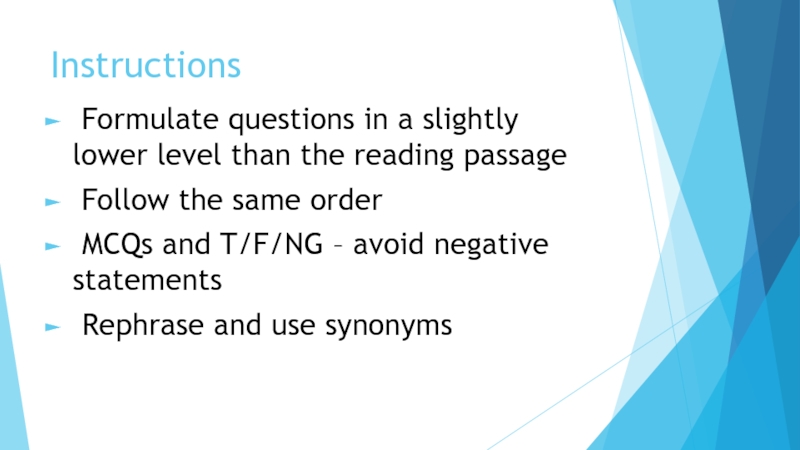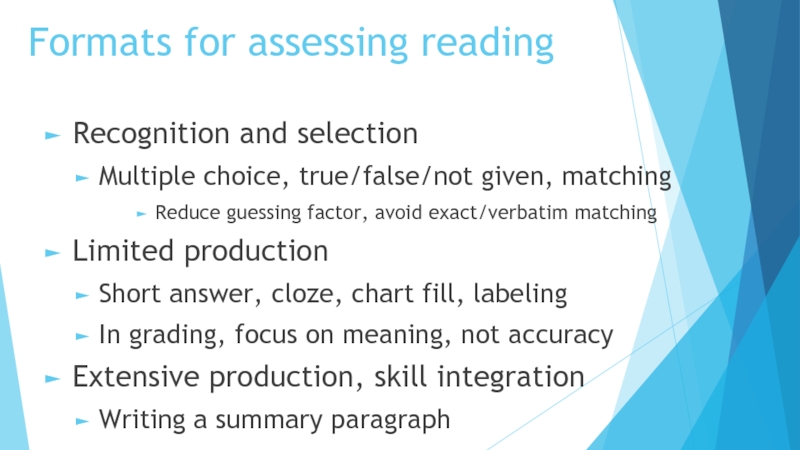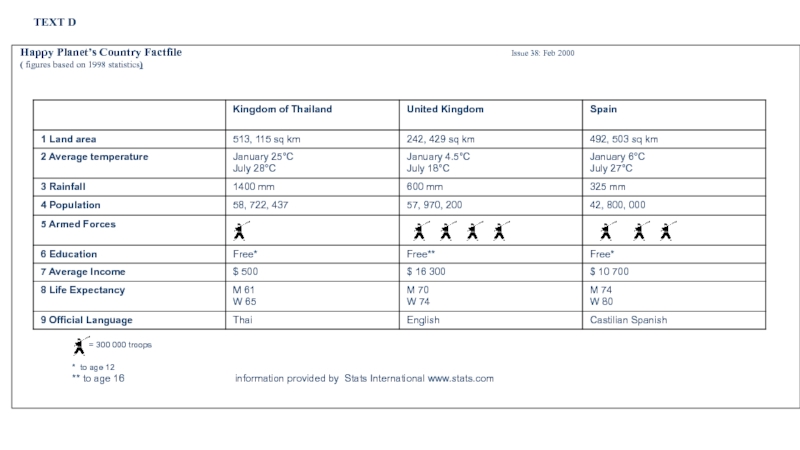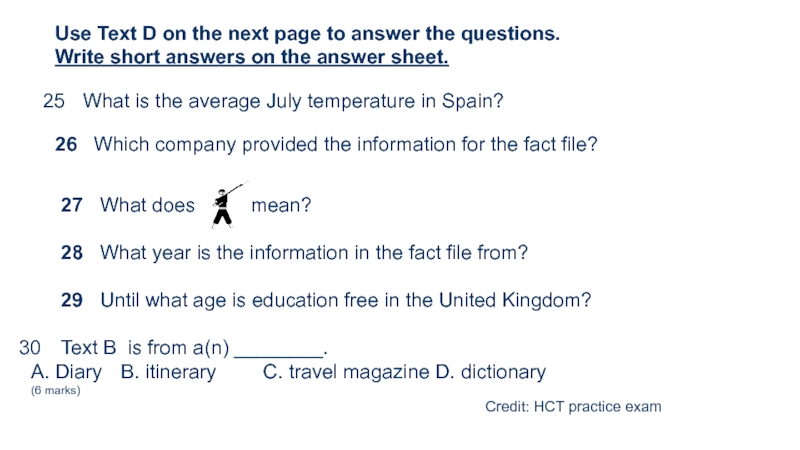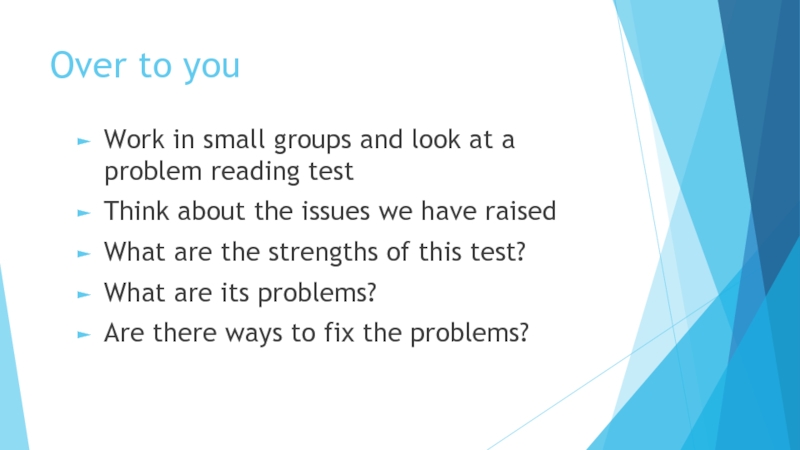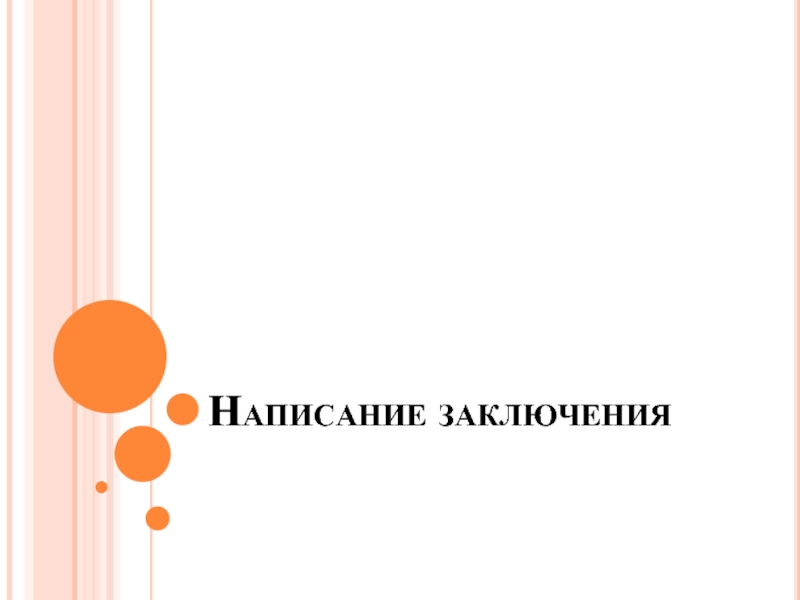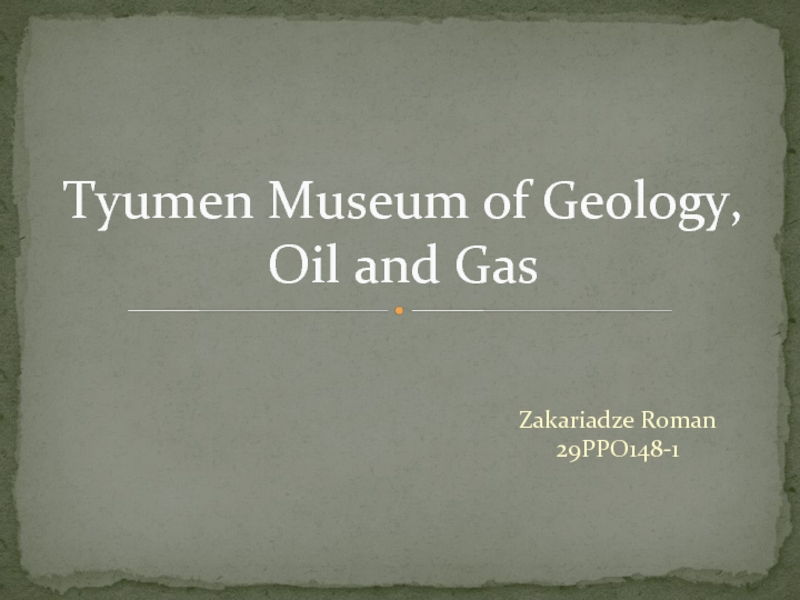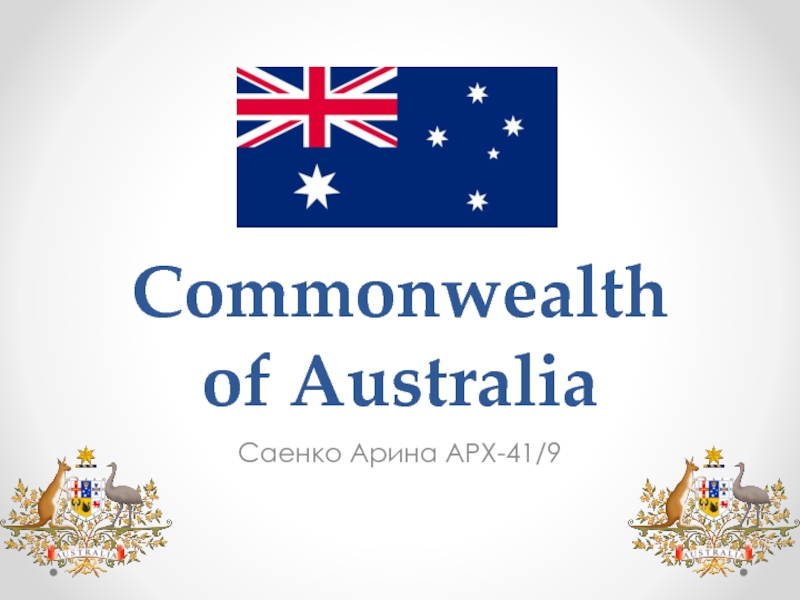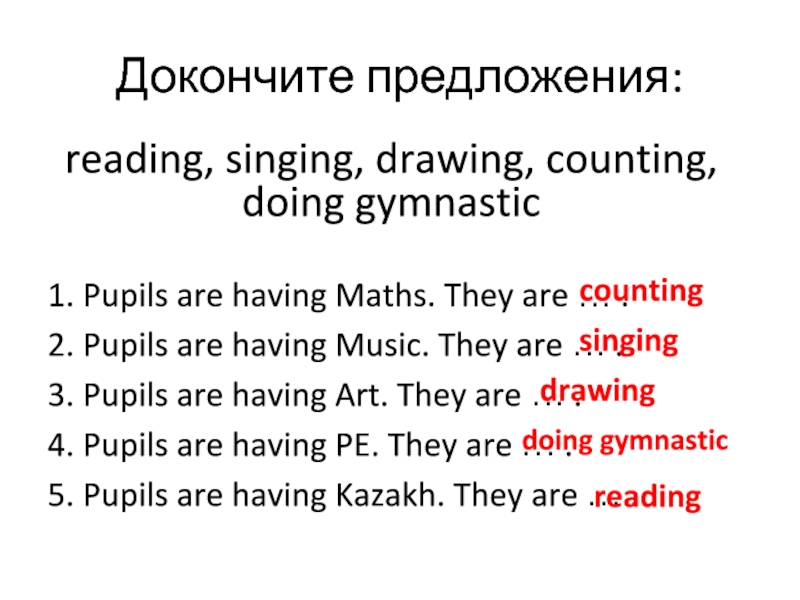- Главная
- Разное
- Дизайн
- Бизнес и предпринимательство
- Аналитика
- Образование
- Развлечения
- Красота и здоровье
- Финансы
- Государство
- Путешествия
- Спорт
- Недвижимость
- Армия
- Графика
- Культурология
- Еда и кулинария
- Лингвистика
- Английский язык
- Астрономия
- Алгебра
- Биология
- География
- Детские презентации
- Информатика
- История
- Литература
- Маркетинг
- Математика
- Медицина
- Менеджмент
- Музыка
- МХК
- Немецкий язык
- ОБЖ
- Обществознание
- Окружающий мир
- Педагогика
- Русский язык
- Технология
- Физика
- Философия
- Химия
- Шаблоны, картинки для презентаций
- Экология
- Экономика
- Юриспруденция
Assessing reading презентация
Содержание
- 1. Assessing reading
- 2. What do we mean by reading?
- 3. What reading skills do we employ when
- 6. Reading is an interactive process Linguistic schemata:
- 7. Bottom-Up Reading
- 12. Top-down reading
- 13. Reading bottom-up vs top-down style BU
- 14. Reading: What are your objectives? Macro skills
- 15. What macro skills do you want to
- 16. What micro skills do you want to
- 17. What do we read?
- 18. Some considerations in designing reading tasks Use
- 19. Flesch Reading Ease
- 20. Readability level
- 21. Instructions Formulate questions in a slightly
- 22. Formats for assessing reading Recognition and selection
- 23. TEXT D Happy Planet’s
- 24. Use Text D on the next page
- 25. Over to you Work in small groups
Слайд 2What do we mean by reading?
What is reading?
What happens
What kind of skill is reading?
Слайд 3What reading skills do we employ when reading…
a timetable?
a
a poem?
Skimming for general understanding
Scanning to find a particular name or figure
Reading carefully for detail
Predicting content
Reading for pleasure
Reading for analysis
All of the above
Слайд 6Reading is an interactive process
Linguistic schemata:
Discourse
Vocabulary
Grammar
Spelling and punctuation
Cohesion
Rhetorical structure
Content schemata:
Background knowledge
Values
Knowledge
Metalinguistic schemata:
Goal setting
Building mental sets
Reading strategies
Review and remediation
Слайд 13Reading bottom-up vs top-down style
BU takes 3 times longer: more
More challenging:
unknown vocabulary
difficult sentence structure
unfamiliar grammar (articles, phrasal verbs)
Inexperienced readers rely heavily on bottom-up reading techniques and may misuse top-down techniques, and vice versa
Слайд 14Reading: What are your objectives?
Macro skills
Reading quickly to skim for gist
Reading thoroughly for main ideas, supporting details, argument, purpose, relationship of paragraphs, fact vs. opinion, etc.(intensive reading)
Drawing inferences
Information transfer from nonlinear texts
Micro skills
understanding at the sentence level
syntax, vocabulary, cohesive markers
Understanding at inter-sentence level
reference pronouns, discourse markers
understanding components of nonlinear texts
Labels, captions, symbols
Слайд 15What macro skills do you want to assess? How are you
Macro skills
Reading quickly to skim for gist, scan for detail, establish general organization
Reading carefully for main ideas, supporting details, argument, purpose, relationship of paragraphs, fact vs. opinion, etc.
Information transfer from nonlinear texts
Assessment strategies
Ask questions about main ideas, supporting evidence, organization of text, purpose etc.
Use common formats such as MCQ, TFN, short answer, extended answer
Create a chart for Ss to fill in with information
Слайд 16What micro skills do you want to assess? How are you
Micro skills
understanding at the sentence level
syntax, vocabulary, cohesive markers
understanding at intersentential level
reference, discourse markers
understanding components of nonlinear texts
Assessment strategies
Focus questions on sentence level
Do selective deletion of vocabulary, grammar, or markers – cloze
Ask questions that relate to sentences
Ask what pronouns refer to
Ask about features of charts or graphs
Слайд 18Some considerations in designing reading tasks
Use both prose texts and non-linear
Collect appropriate reading material
For assessment, ensure that topics within Ss’ experience, but not too familiar. Do not use material they have read before
Make length and readability suitable for level
Limit unknown words to 5-10% (Nation, 1990)
Topic should not be biased for any Ss or upsetting
Authentic material and source
Слайд 21Instructions
Formulate questions in a slightly lower level than the reading
Follow the same order
MCQs and T/F/NG – avoid negative statements
Rephrase and use synonyms
Слайд 22Formats for assessing reading
Recognition and selection
Multiple choice, true/false/not given, matching
Reduce guessing
Limited production
Short answer, cloze, chart fill, labeling
In grading, focus on meaning, not accuracy
Extensive production, skill integration
Writing a summary paragraph
Слайд 23
TEXT D
Happy Planet’s Country Factfile
( figures based on 1998 statistics)
= 300 000 troops
* to age 12
** to age 16 information provided by Stats International www.stats.com
Слайд 24Use Text D on the next page to answer the questions.
Write
What is the average July temperature in Spain?
26 Which company provided the information for the fact file?
27 What does mean?
28 What year is the information in the fact file from?
29 Until what age is education free in the United Kingdom?
Text B is from a(n) ________.
A. Diary B. itinerary C. travel magazine D. dictionary (6 marks)
Credit: HCT practice exam
Слайд 25Over to you
Work in small groups and look at a problem
Think about the issues we have raised
What are the strengths of this test?
What are its problems?
Are there ways to fix the problems?
